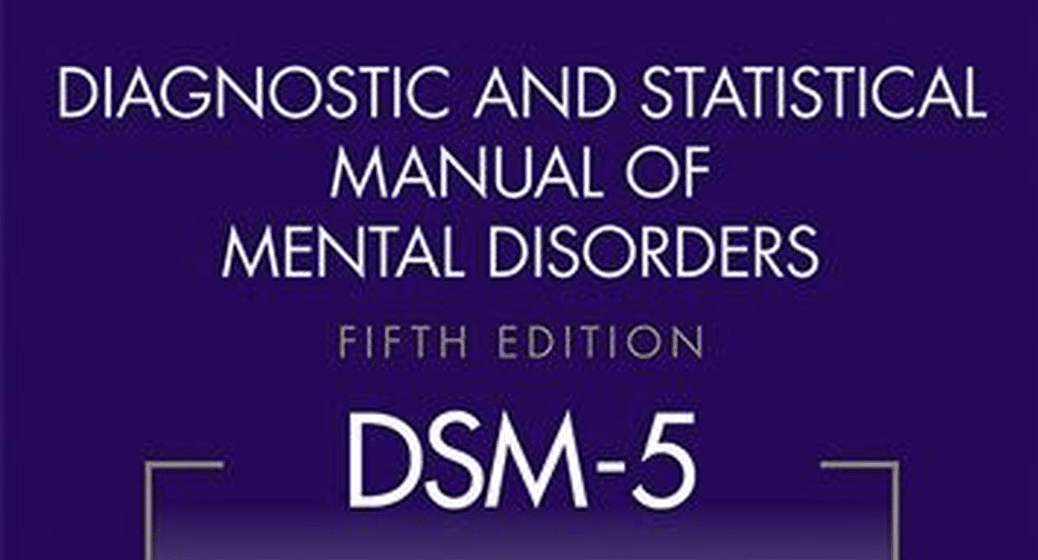Last Sunday evening, I decided I was going to stay off Instagram this week. By Friday, I found myself at least twelve taps deep into an acquaintance’s story documenting tropical drink garnishes in the Caribbean.
Why is it so hard to stop using social media? Can we really be addicted to our phones?
The short answer is no. Using our smartphones too much is not an addiction. But that doesn’t mean it’s easy to stop. It also doesn’t mean it’s not a problem.
First: what is addiction?
To understand why smartphone overuse is not an addiction, we first need to understand what is an addiction.
Addiction is characterized by compulsively engaging in a behavior despite harmful consequences, and it is a mental illness, just like depression, or OCD, or ADHD.
But how do we know what is classified as a mental illness?
Every ten years or so, a panel of experts in the U.S. convenes to develop the latest version of the Diagnostic and Statistical Manual of Mental Disorders (DSM). This book contains a list of the hundreds of mental disorders that are currently recognized, along with the symptoms a person must have to be diagnosed. With each new edition, symptoms are refined, and disorders are added, removed, or re-classified based on the best available evidence. The DSM is sometimes called the “bible” of psychiatric diagnoses.
The most recent version, DSM-5, was released in 2013. Many updates were made, including changing the numbering system from the prior Roman numerals (i.e., DSM-IV) to the much more trendy and approachable Arabic numerals. Most relevant to us, though, was the heated discussion and subsequent decisions made around classifying addiction.
The research consensus is pretty clear when it comes to addiction to psychoactive substances, like alcohol or drugs. These are called “Substance Use Disorders” in the DSM-5. The DSM-5 lists 11 symptoms, of which a person must have at least two to be diagnosed. These include symptoms like impaired control (i.e., being unable to control how much you use), physical dependence (i.e., developing tolerance and withdrawal symptoms when stopping), social problems (i.e., interference with functioning at work or home), and risky use (i.e., using in dangerous situations).
Why shouldn’t we diagnose smartphone addiction?
When it comes to substance use, diagnosing “addiction” as a mental illness is relatively straightforward. But what about behavioral addictions? These are addictions to behaviors rather than chemical substances—like sex, chocolate, shopping, or, of course, smartphones. Some researchers have even described so-called addictions to Argentinean tango and Harry Potter. Do these count as addictions? Are they mental illnesses?
Certainly, these behaviors can be hard for many people to control. It’s hard to stop using our phones. This is partially due to something called “intermittent reinforcement.” Often, when we check our phones, there’s nothing too exciting happening. We refresh our email, scroll through Twitter, check the weather. Meh. But every once in awhile, we check our phones and something really exciting happens. A funny meme! A message from a friend! Someone liked our photo!
Because we’re never quite sure when that reward is going to come, we keep checking over and over. In other words, the intermittent nature of the reward reinforces our phone-checking behavior. It’s like a slot machine. We keep trying because we know there’s a reward, but we can’t predict when it will happen. As you’ve likely heard, dopamine—a neurotransmitter involved in our brains’ processing of rewards—also plays an important role in this process.
So then, why wouldn’t the DSM-5 committee create a new classification called “Smartphone Use Disorder” and move along to discussing Harry Potter? Why shouldn’t we all just diagnose ourselves and our children with smartphone addiction?
There are a few reasons.
Pathologizing Behavior. The first is the issue of “pathologizing” behavior—that is, calling (or not calling) a behavior a mental illness. On the one hand, we need to be careful not to under-pathologize behavior. Substance use disorders have often been subject to stigma and lacked recognition as true medical disorders. The result is an incredibly serious disease, which contributes to tens of thousands of deaths in the U.S. every year, but often is not treated as such.
On the other hand, if we call every behavior that is difficult to stop doing an “addiction,” we run the risk of over-pathologizing. Recent estimates suggest that as many as 35% of adults would meet criteria for “smartphone addiction.” If more than one-third of the population is engaging in a behavior, can it still be considered a disorder? Or is it just “normal” behavior? By over-pathologizing everyday behaviors, the “disorder” label becomes less meaningful; if everyday smartphone use is lumped together with PTSD and OCD, the seriousness of these disorders may be overlooked.
Severity. Related to pathologizing is the issue of severity or impairment caused by a behavior. It’s certainly the case that, for many people, phone use is interfering with their daily functioning—distracting them, or taking away from time they should spend doing other things. And yes, the sense of being unable to take your eyes off an Instagram feed—or being unable to pry your child’s fingers off a phone keyboard—is often distressing. However, it’s unlikely this level of distress or impairment rises to that of a substance addiction.
It is, of course, possible that certain people are highly impaired by their smartphone use—forgoing eating, showering, socializing, even leaving the house, due to constant smartphone use. If such cases are documented and not to be better explained by another disorder (e.g., depression), perhaps Smartphone Use Disorder will make its way into the next version of the DSM. But for now, as far as I’m aware, evidence for this does not exist.
“Good” and “Bad” behaviors. The final issue is the health consequences—or lack thereof—of a given behavior. There is an implicit value judgment here. We refer to things as “addictions” when we feel, for moral, cultural, or health reasons, that there is something bad about them.
Take the following situation. Bob spends hours every day doing X. He’s often late to come home to spend time with his family because he gets caught up doing X. He’s given way too much money to X. He keeps telling himself that he’ll slow down or stop doing X, but he keeps coming back to it. In fact, he’s spending more time doing X this year than ever before. He’s given up all other hobbies to focus on X.
Replace “X” with something we would generally say is bad—let’s say some kind of drug. This, of course, is an addiction. Now replace “X” with something we’d classify as good—say, volunteering with a particular charitable cause. Is that an addiction? Probably not. Now, what about working? Shopping? Exercise? Spending time with friends?
It starts to get complicated. When it comes to our smartphones, it’s not always clear whether the time we spend time is good or bad. Often, it’s somewhere in the middle. Or it’s both, at different times. When we say our kids are addicted to their phones, we assume that what they’re doing on those phones is, generally, bad. But that’s often not the case.
In the end, the DSM-5 recognizes only one behavioral addiction: Gambling Disorder. This is because there’s a strong research base supporting the presence of Gambling Disorder as an incredibly impairing disease, and supporting its similarities to substance use disorders in course, severity, and brain mechanisms. But Smartphone Addiction is, as of yet, nowhere to be found.
Problematic smartphone use
It’s one thing to classify a behavior as as a mental illness, and another completely to say it’s good for you, or even neutral. There are many behaviors we do on a regular basis that don’t meet the threshold for addiction, but which we’d probably be better off doing differently—say, eating too many chocolate chip cookies or procrastinating finishing work assignments. Just because we aren’t technically addicted to our smartphones doesn’t mean we should continue using them the way we do.
Researchers are now moving away from the language of “smartphone addiction” and instead are focused on “problematic” or “maladaptive” smartphone use. Problematic smartphone use likely exists on a continuum—rather than a dichotomous “have it” or “don’t have it.” How can we determine how problematic our, or our children’s, smartphone use might be? Interestingly, we can rely on many of the same criteria that we would used to classify addiction.
You can take this quiz—adapted from existing measures of problematic smartphone use—to determine how much your own smartphone use may be problematic:
Impaired Control
- Larger Amount/Longer: Do you use your phone more or for longer periods of time than you intended?
- Attempts to Quit: Have you tried unsuccessfully to cut down on your phone use?
- Time: Do you spend significant amounts of time using your phone?
- Craving: Do you experience strong urges to use your phone?
Physical Dependence
- Tolerance: Has the amount of time you’ve spent on your phone increased over the last year?
- Withdrawal: Do you feel restless, irritable, or anxious when you can’t use your phone?
Social Problems
- Neglected Major Roles: Has using your phone gotten in the way of work, time with family, or school?
- Social Problems: Has using your phone led to arguments or problems with your family or friends?
- Activities Given Up: Have you stopped or reduced important activities (e.g., work, socializing) to use your phone?
Risky Use
- Hazardous Use: Do you use your phone in situations where it might be dangerous (e.g., while driving)?
- Physical or Psychological Problems: Has using your phone caused you to feel depressed or anxious, or has it caused physical problems (e.g., sore neck)?
If you’re anything like me, at least a few of these questions get a sheepish “yes.” But it doesn’t have to be this way. We can take a second to reflect on how our phone use may be interfering with the rest of our lives. Is it getting in the way of other things we want to do? Is it interfering with work or school? Is it causing problems in our family or with friends? Is it making us feel anxious or depressed?
We don’t want to pathologize our phone use, or our children’s phone use. But we do want to be intentional about it. When is our phone use functional, fun, or…just fine? And when is it problematic? We may not always have the answers, but we should keep asking ourselves the questions.
This post originally appeared on Techno Sapiens, Dr. Nesi’s newsletter about technology, psychology, and parenting. You can check out all of her previous posts here.
Keep Reading
Want more? Here are some other blog posts you might be interested in.








